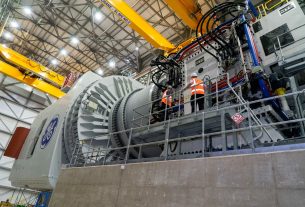Germany – RWE and Forschungszentrum Jülich intend to show how solar energy and agriculture can coexist at a demonstration plant in the Rhenish mining zone.
On approximately seven hectares of recultivated land at the edge of the Garzweiler opencast lignite mine, RWE began construction of the agrivoltaics (Agri-PV) plant for generating solar power while simultaneously utilising the area for agricultural and horticultural uses. The state of North Rhine-Westphalia is funding the research study through the progres.nrw initiative for climate protection and the energy transition. By the end of this year, the demonstration plant, which will have a peak capacity of 3.2 megawatts (about 2.5 MWac), should be operational. Research projects that will last at least five years will commence in 2024.
The project’s goal is to evaluate effective cultivation techniques and value-adding tactics for managers of agri-PV plants. The Forschungszentrum Jülich provides its scientific knowledge in the area of integrating photovoltaics and plant research, including in the bioeconomy. RWE is contributing recultivated land in addition to its long-standing relationships with local farmers and the vast technical know-how it has acquired from the creation, building, and operation of solar power facilities around the world.
Three ideas, one place
For the demonstration plant, three different technical Agri-PV concepts are planned, all of which would allow for the simultaneous use of the land for both the production of food and power. The solar modules in Next2Sun’s first system are rigidly mounted on the substructure and have a vertical configuration. The agricultural use of the land can be evaluated with enough room left between the module rows for harvesting equipment. The modules are arranged in rows in Schletter’s second system as well, but they are mounted on moveable axes that allow them to follow the sun as it moves from east to west.
This should maximize the PV system’s energy output while also freeing up space for concurrent agricultural usage. The third solution by Zimmermann PV-Stahlbau elevates the PV modules on a tall pergola-like substructure, allowing for the cultivation of crops like raspberries or blueberries below them.




